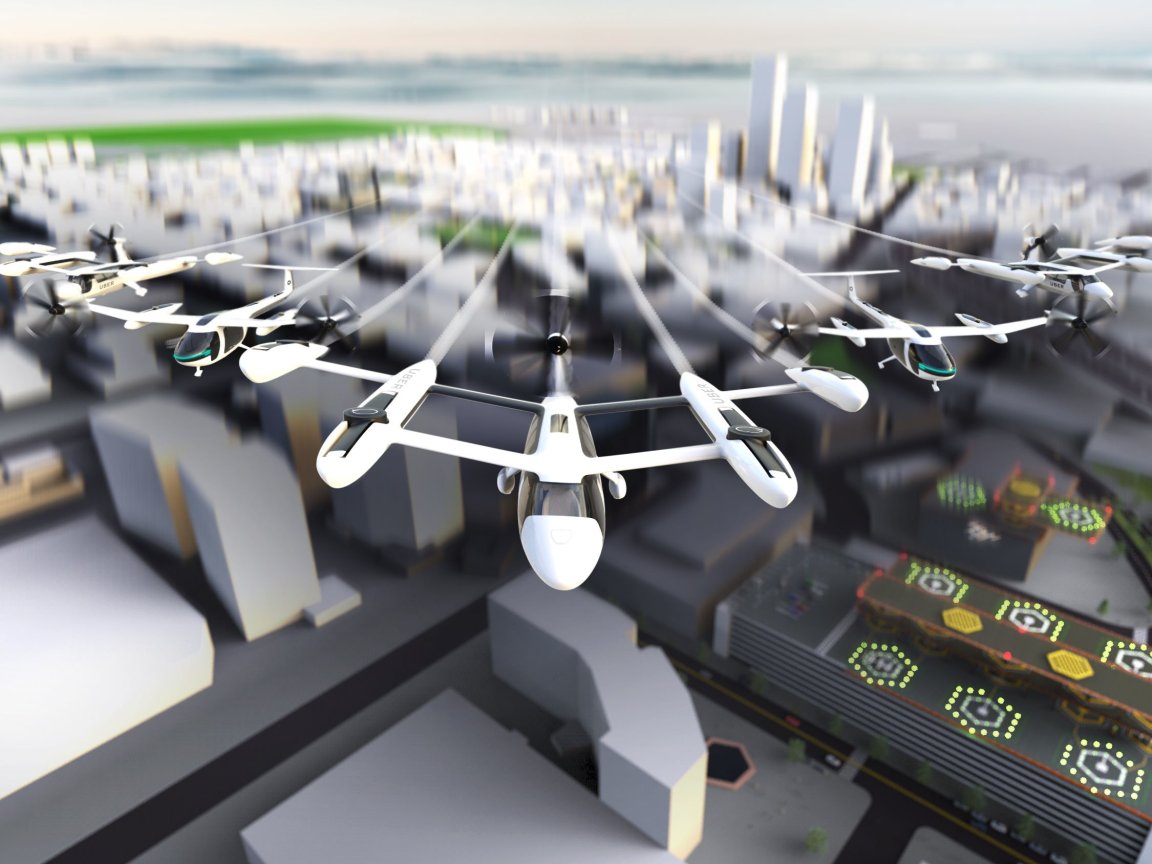
You already know that Uber wants to clog up the skies the way it has roads in cities all over the world. But now we know what the airborne Uber vehicle could look like.
Today, Uber has finally unveiled a design called the Common Reference Model (CRM).
Yes, the name is not sexy. But the vehicle itself actually kind of is. The all-electric VTOL (vertical take-off and landing) vehicle can seat up to four humans, back-to-back, cutting a two hour commute down to just 15 minutes. The design was released at Uber’s Elevate summit in Los Angeles, hosting around 700 industry leaders, to discuss the future of flying taxis.

Uber hired former NASA engineer Mark Moore to develop the concept, who’s had plenty of experience working on electric propulsion aircraft, including the X-57: a small, lightweight plane that features 12 electric motors along its wings.
The CRM is outfitted with a series of propellers, some of which are redundant to serve as a safety backup in case one of them were to ever fail. Two big supports on either end hold individual pairs of rotors that are stacked on top of each other. An additional vertical propeller in the back provides forward thrust. You can only get in and out on one side, to make boarding and disembarking as simple (and safe) as possible.
As preliminary tests indicate, the stacked propellors make this vehicle quieter than previous designs, and make it safer since it has more redundancy. Unlike previous models that featured swiveling propellers, the two permanent supports on the sides will greatly simplify maintenance, and better performance, according to Mark Moore, as quoted in Wired.
Modeling calculations suggest the concept’s range is only 60 miles due to battery limitations, and can only fly up to 2,000 feet above ground (the Empire State Building is about 1,250 feet, to give you an idea).
But here’s the catch: the CRM will never be built — it’s supposed to serve as a kind of master blueprint for other manufacturers to base their designs on. The reasoning is simple: the more fractured and varied future flying taxi models become, the harder it will be to regulate them, and the harder it will become for all of them to share the same infrastructure (landing pads, air space required for travel, etc.). The Uber design, then, will help them all start from the same place to unify the technology and infrastructure to come.
While this may not be exactly what Uber’s actual, commercial flying taxi will end up looking like, it’s an important first step. And it shows that Uber is committed to the idea —and also open to working with other aircraft manufacturers to make flying taxis a viable mode of transport in our future.
Uber is hoping to start testing its UberAir service in just two years from now at the Dallas-Fort Worth airport in Texas.
Stay tuned for further developments, as Uber’s Elevate conference is only getting started.